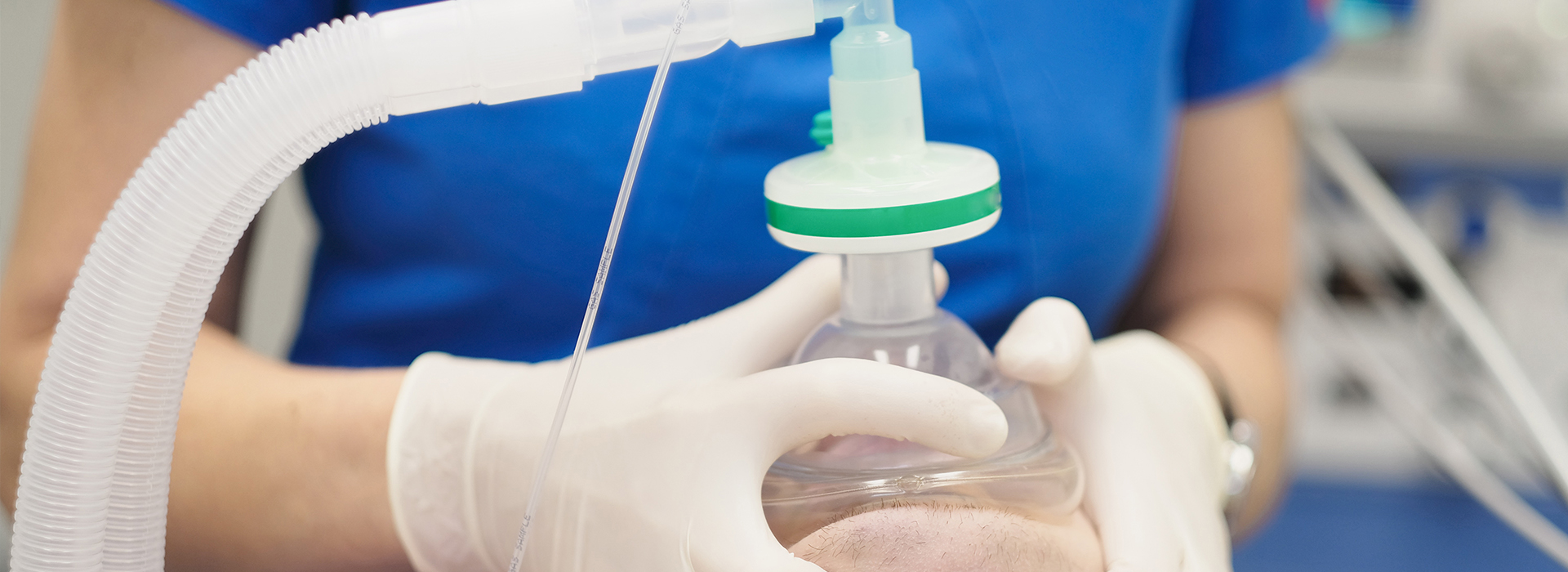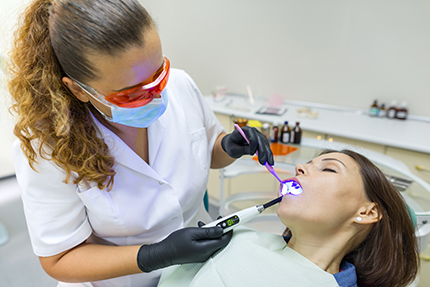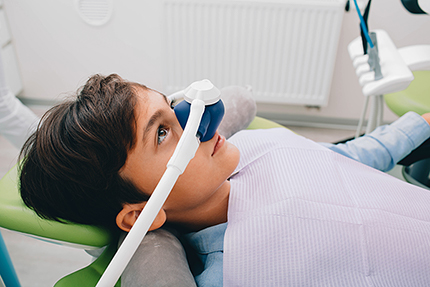
Anxiety about dental care is common — studies estimate that many adults experience some degree of dental fear — and that worry can keep otherwise healthy people from getting the treatment they need. If the thought of a dental appointment makes you tense or causes you to delay care, Chilmark Dental P.C. offers proven, carefully supervised sedation options to make visits calm, efficient, and far less stressful.
Sedation dentistry is not about putting patients to sleep for convenience; it’s about removing barriers so people can receive safe, thorough dental treatment with dignity and comfort. Our approach combines clear communication, individualized planning, and modern monitoring to ensure that relaxation and safety go hand in hand.
For many patients, the physical symptoms of dental anxiety — an elevated heart rate, muscle tension, nausea — interfere with the ability to tolerate routine care. Sedation reduces those symptoms by producing a calming effect that allows the dental team to work efficiently while the patient remains comfortable. Rather than experiencing every noise and sensation during treatment, most patients report a sense of detachment from the moment-to-moment details of the procedure.
Beyond easing nerves, sedation can make longer or more complex visits manageable in a single appointment. That means fewer trips to the office and less cumulative stress for patients who would otherwise avoid treatment. Importantly, sedation is used alongside local anesthetic so the targeted area is numb and pain-free while the sedation addresses anxiety and overall comfort.
Every sedation plan begins with a conversation: we review your medical history, current medications, and previous experiences with anxiety or sedation. This individualized assessment allows our clinical team to recommend the safest level of sedation for your needs and to explain what to expect before, during, and after the visit so you can feel confident and prepared.

Sedation is appropriate for a wide range of patients who might otherwise struggle to complete dental treatment. People with a strong fear of dental procedures, those who have postponed care for years, or anyone who becomes panicked in the dental chair can often proceed comfortably with the help of sedation. It’s a compassionate tool that levels the playing field for patients who need care but are held back by anxiety.
Other candidates include patients facing lengthy restorative or surgical procedures that would be uncomfortable to sit through while fully awake, people with an exaggerated gag reflex that makes treatment difficult, and those with sensitive teeth or strong physical reactions to dental instruments. Sedation also helps patients who have physical or cognitive challenges that make it hard to remain still during treatment.
Deciding whether sedation is right for you is a collaborative process. We consider the complexity of the work to be done, your medical background, and your personal preferences. When sedation is selected, our goal is the same: to deliver effective dental care in a way that preserves your comfort and reduces anxiety-driven avoidance.

Choosing the right sedation method depends on a few core factors: the patient’s medical history, the level of anxiety, and the duration or invasiveness of the procedure. Safety is always the priority, so we tailor the approach to achieve adequate relaxation while maintaining reliable breathing and cardiovascular stability. If deeper anesthesia is required for very complex cases, those situations are managed in appropriate hospital settings with an anesthesiologist.
Most dental sedation provided in an office setting is conscious sedation, meaning patients are relaxed but remain responsive to verbal cues and breathe without assistance. Conscious sedation reduces awareness of the procedure and produces amnesia for much of the experience while preserving protective reflexes. General anesthesia, by contrast, induces a fully unconscious state and is reserved for specific, high-risk scenarios where in-office sedation would not be sufficient.
Office-based options include inhaled nitrous oxide for mild to moderate anxiety, oral sedatives taken before an appointment for deeper relaxation, and IV sedation when rapid onset and precise control are needed. Each method has predictable effects and specific preparation requirements — for example, IV sedation often requires fasting for a period beforehand — and we’ll review those details with you at the pre-treatment visit.
Before any sedated appointment, you’ll complete a health review that covers medications, allergies, and prior reactions to sedatives. This intake helps us determine the best option and anticipate any precautions. We’ll also explain instructions for the day of treatment — such as arrival time and whether you’ll need an escort home — so you know exactly how to prepare.
During the procedure, we monitor vital signs continuously and keep the treatment team informed about your response to the medication. Our staff is trained to recognize and manage any changes in condition, and we use established protocols to ensure patient safety at every step. Communication is candid and prompt: if you have questions while you’re sedated, the team will address them when appropriate.
After treatment, recovery time varies by the method used. With lighter forms of sedation, most patients feel alert quickly; deeper sedation requires additional observation until it’s safe to leave. Because certain sedatives impair coordination and judgment for a time, an escort is required after moderate or deep sedation so you can travel and rest comfortably at home while the medication wears off.
Safety in sedation dentistry rests on three pillars: careful screening, trained personnel, and appropriate monitoring equipment. Our team follows current clinical guidelines and uses standard monitoring throughout sedated appointments to track oxygenation, heart rate, and blood pressure. Staff training ensures that providers can respond quickly and effectively to routine or unexpected situations.
Comfort is equally important. We take time to address concerns, explain each step, and tailor the environment to reduce stress — from adjusting lighting and noise to offering clear verbal reassurance. For many patients, knowing there is a plan and that the care team is attentive is itself a powerful calming influence.
When sedation is part of treatment, we document everything thoroughly and provide clear post-procedure instructions so recovery is smooth. Our objective is simple: to make high-quality dental care accessible to patients who might otherwise avoid necessary treatment because of fear or discomfort.
In summary, sedation dentistry is a safe, effective way to remove anxiety as a barrier to dental health. By matching the appropriate sedation level to your needs and monitoring you closely throughout care, our team helps people receive essential treatment with dignity and minimal stress. Contact us for more information about how sedation could make dental visits easier for you.
Sedation dentistry offers patients with general anxiety or fears about a dental procedure the opportunity to have a more comfortable and stress-free experience. By utilizing safe and controlled sedation techniques, the patient is eased into a state of complete relaxation before the procedure. This approach eliminates discomfort, pain, and preoperative anxiety, and typically makes patients feel more at ease post-operatively, as they have little or no memory of the actual moment-to-moment procedure.
Local anesthesia involves an injection directly into or close to the area where a procedure is being performed. While it eliminates any sensation of pain in the targeted area, it does not affect your state of mind or level of anxiety. When a patient receives sedation, additional medications to ease anxiety and promote relaxation are employed in advance of local anesthesia. In this way, both the stress and discomfort associated with a procedure are eliminated. Sedation can be administered in a variety of forms based upon patient needs and the recommendations of the dentist or dental anesthesiologist.
Choosing the most appropriate method of sedation for a procedure depends on a variety of factors such as a patient's medical history and their level of anxiety. Dental sedation can come in the form of nitrous oxide sedation, oral conscious sedation, and IV sedation. Certain patients receiving comprehensive treatment or undergoing a complex surgical procedure may require general anesthesia in a hospital setting.
Nitrous oxide, or "laughing gas," is a mild sedative, which is inhaled through a small mask over the nose. A standard in dental sedation for decades, the effects of nitrous oxide are almost immediate and wear off quickly once your procedure is completed.
Oral sedation involves the prescription of an oral medication prior to your appointment. Taken at the recommended time before your visit, oral sedation allows you to feel fully relaxed by the time you're ready for your procedure. With oral sedation, it's necessary to plan on having an escort to and from your dentist's office.
IV Sedation is administered intravenously, or directly into a vein. It is typically indicated when a deeper state of sedation is required. Your dentist will provide you with specific instructions before your visit, and require that you have an escort for the trip home from your appointment.
Sedation dentistry uses safe, controlled medications to help patients relax during dental procedures while maintaining appropriate levels of consciousness and responsiveness. It is designed to reduce anxiety, minimize discomfort, and allow complex or lengthy treatments to be completed more comfortably. Different levels of sedation range from mild relaxation with inhaled agents to deeper conscious sedation delivered orally or intravenously.
When recommended, sedation is used in combination with local anesthesia so the treatment area remains numb and pain-free. The office of Chilmark Dental P.C. evaluates each patient’s medical history and treatment needs to determine the most appropriate sedation approach. Proper monitoring and recovery protocols are followed to support a smooth and safe experience.
Local anesthesia numbs a specific area of the mouth so patients do not feel pain at the treatment site, but it does not alter awareness or anxiety levels. Sedation adds medications that calm the patient and reduce anxiety while they generally remain conscious and able to follow simple commands. General anesthesia, by contrast, induces a deep, medically controlled sleep in which the patient is not responsive and requires specialized airway and monitoring support.
Conscious sedation aims to balance comfort with safety by maintaining spontaneous breathing and cardiovascular stability while reducing memory of the procedure. The choice between sedation and general anesthesia depends on the patient’s medical condition, level of anxiety, and the complexity of the dental work. A thorough preoperative assessment ensures the selected method matches clinical needs and patient safety requirements.
Common office-based sedation options include inhalation sedation with nitrous oxide, oral sedation using prescribed medications taken before the appointment, and intravenous (IV) sedation delivered directly into a vein. Nitrous oxide provides mild to moderate relaxation and wears off quickly after the mask is removed, while oral medication produces a deeper calming effect that may leave the patient drowsy. IV sedation can be titrated by the clinician for more precise control of sedation depth and is often used for more extensive procedures.
All sedation techniques are administered by trained dental professionals and monitored throughout the appointment to maintain airway safety and stable vital signs. The specific choice is individualized based on the patient’s medical history, anxiety level, and treatment requirements. Pre-procedure instructions and post-procedure monitoring are important parts of each method to ensure a safe outcome.
Candidates for sedation dentistry include patients who experience significant dental anxiety or phobia, those who have difficulty tolerating long or complex procedures, and individuals with a pronounced gag reflex or hypersensitive teeth and gums. Sedation can also benefit patients with cognitive or physical challenges that make it hard to sit still for dental care. A careful medical and dental evaluation helps determine whether sedation is an appropriate and safe option.
Certain medical conditions, medications, and airway or respiratory issues may influence the choice or suitability of sedation, so full disclosure of medical history and medications is essential. The dental team will review risks and benefits, obtain any necessary medical clearances, and develop a personalized plan that prioritizes safety and effective care. When indicated, sedation enables patients to receive needed treatment while minimizing stress and discomfort.
Preparation varies by sedation type, but common instructions include arranging transportation to and from the appointment, avoiding food and drink for a specified period before IV sedation, and following any medication guidance from the dental team. Patients should bring a list of current medications, allergies, and relevant medical information to review during the preoperative consultation. Planning for rest and limited activity after the appointment helps support recovery when deeper sedation is used.
The practice will provide clear, written pre- and post-procedure instructions tailored to the chosen sedation method, including fasting times and whether an escort is required. It is important to follow these directions closely to reduce the risk of complications and ensure a smooth recovery. If you have concerns about medications, driving, or caregiving after the visit, discuss them with the dental staff ahead of time so accommodations can be arranged.
Before treatment begins, the dental team conducts a focused review of health history, vital signs, and the sedation plan, then positions monitoring equipment to track oxygenation, heart rate, and blood pressure. Sedation medications are administered according to the selected method, and the patient is continuously observed throughout the procedure to ensure comfort and safety. Local anesthesia is applied to numb the treatment area so no pain is felt while work is performed.
Throughout the appointment, clinicians communicate as needed and monitor the patient’s level of consciousness and physiological responses, adjusting medication as appropriate. Once the procedure is complete, sedation is stopped or allowed to wear off, and the patient is moved to a recovery area for continued monitoring until they meet discharge criteria. Clear post-procedure instructions are reviewed before the patient leaves the office.
Recovery time depends on the type and depth of sedation used; inhaled nitrous oxide typically allows for rapid recovery with minimal residual effects, while oral and IV sedation can cause drowsiness for several hours. Patients are usually observed in the office until vital signs are stable and they are alert enough to be safely discharged, and an escort is required to drive if deeper sedation was used. It is common to feel groggy, have slowed reaction times, or experience mild memory gaps for a short period after sedation.
Following the appointment, patients should avoid driving, operating machinery, or making important decisions for the remainder of the day if stronger sedation was provided. The dental team will give specific aftercare guidance, including activity restrictions, wound care instructions if surgical treatment was performed, and signs to watch for that would warrant contacting the office. If any unexpected symptoms occur, patients are advised to call the practice promptly.
As with any medical intervention, sedation carries potential risks and side effects that vary with the type and depth of sedation as well as the patient’s health status. Common, generally mild effects include nausea, drowsiness, and temporary lightheadedness, while more serious complications such as respiratory depression or cardiovascular reactions are rare when proper screening and monitoring occur. Thorough preoperative evaluation and adherence to recommended fasting and medication instructions help reduce the likelihood of adverse events.
Dental teams take multiple precautions to minimize risk, including reviewing medical history, obtaining necessary clearances, using appropriate monitoring equipment, and having emergency protocols and trained personnel in place. Patients should communicate all health conditions, medications, and substance use during the consultation so the safest sedation plan can be chosen. If you have specific concerns about side effects or interactions, discuss them directly with your dental provider before treatment.
Sedation can be an effective tool for pediatric patients and individuals with developmental, cognitive, or physical challenges who cannot tolerate dental treatment while awake. The choice of sedation method and dosing is carefully adjusted for age, weight, medical history, and behavioral needs, and dental teams with pediatric or special-care training can provide appropriate monitoring and support. In many cases, sedation enables safe, efficient delivery of necessary care that would otherwise be difficult or impossible.
Parents or caregivers should provide a full medical history and be present for pre-procedure instructions and post-procedure escorting as required. Specialized practices may partner with anesthesiologists for deeper sedation or general anesthesia when indicated by the patient’s condition or the complexity of treatment. A personalized care plan and clear communication help ensure that children and special-needs patients receive respectful, effective, and safe dental care.
Our team emphasizes patient safety, comfort, and individualized care when recommending and administering sedation, and we follow established clinical protocols for evaluation, monitoring, and recovery. We tailor sedation choices to each patient’s medical history, anxiety level, and treatment needs and provide detailed pre- and post-procedure instructions to support a safe experience. Continuous monitoring and trained staff ensure that patients receive appropriate care throughout the appointment and recovery period.
Communication and informed consent are central to our approach so patients understand the rationale, benefits, and precautions related to sedation before treatment begins. If you have questions about options or how sedation might help you receive dental care with less stress, our office can schedule a consultation to review your needs and develop a personalized plan. We strive to make dental care accessible and comfortable while maintaining the highest standards of clinical safety.
Phone:
Email: